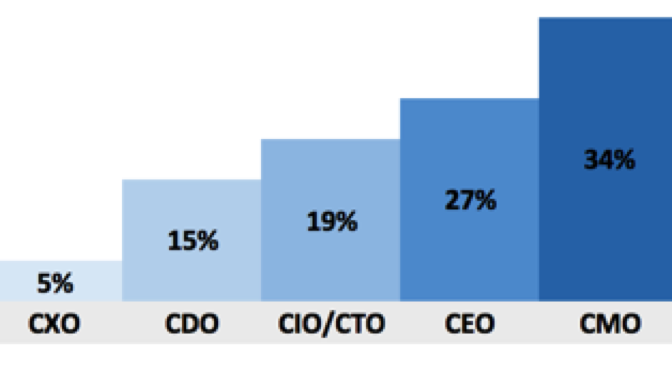Digital transformation is one of those terms that seems to mean, well, everything. That’s because different groups within organizations are investing in innovative technologies to modernize business operations. Whether it’s IT, marketing, CX, HR, service and support, etc., each group, in their own right, is investing in advancement. It’s not a bad thing. At least parts of how companies work are actually evolving. The reality is though that pretty much every company is investing in digital transformation. The difference between them and companies paving the way forward comes down to whether or not change progresses holistically in a unified manner or through individual groups without the benefit of common vision.
In my research, I still see an abundance of disjointed, independent efforts. And, that’s both obstructing and also commoditizing change. But understanding its bigger, more universal play to compete in an ever-evolving digital economy is the true competitive advantage. This means that business units and functions that previously operated autonomously will have to collaborate to lead organized, purposeful enterprise-wide transformation. That takes leadership, empowerment and accountability, much of which is lacking today. That’s all about to change however. There are paths toward transformative change that are already demonstrating results.
In my research over the years, I’ve found that the path toward digital transformation breaks down into six distinct phases, which I detail in the 2016 report, “Six Stages of Digital Transformation.” To document how businesses are or aren’t evolving, why, how and to what extent, I conduct an annual survey of executives around the world. I also conduct ongoing interviews to understand the human-side of change, the challenges, opportunities, priorities, etc., to help other change agents learn from their peers. The latest incarnation of this work is “The 2016 State of Digital Transformation.”
One of the most interesting findings is that there a significant gap exists between those further along the “six stages” than average companies investing in digital. The reason is that most tare still investing in digital transformation disparately. To get to the core of this, I asked in this year’s survey, “who owns digital transformation?” In the past, it was assumed that the answer was usually the CIO. This time around, surprisingly, ownership unequivocally resides with the CMO (34%). This comes as a bit of a shock to CIO/CTO who have traditionally led technology roadmaps. In fact, the CIO/CTO followed in a distant third place at 19%.
Why is the marketing organization far and away the leader?
Study after study, customer experience is consistently becoming a critical business priority. That’s not something that the CIO is focusing on as a formal initiative alone. They’re typically managing the entire information infrastructure. Chief marketing officers though are leading the charge in technology investments to upgrade and build touch points that help companies lead connected customers along a more productive customer journey. This is, as all research corroborates, a strategic investment in competing for the future.
While pitting CMOs against CIOs is certainly controversial, mature companies demonstrate that the greatest progress occurs when both groups, among other cross-functional groups, work together. More so, they band together around CX to unite silos around fixing the fundamentals, removing friction and introducing new value propositions. Even still, there’s much work to do…collectively. Although CX remains a top driver of digital transformation, only half of the companies I studied have mapped or are mapping the customer journey. And, a mere 20% of digital transformation leaders are studying the mobile customer journey.
Regardless of who’s winning the race for leading digital transformation, there’s much work to do to unite the company around a common front. To progress along the six stages, companies must invest in new technology second to understanding the evolution of customers and employees. Then and only then, can change agents bring together key stakeholders to invest in meaningful digital transformation strategies. This helps companies track toward real world, evolving relevance rather than just investing in technological change as a means to act like their more sophisticated counterparts.
Original article by Brian Solis in Forbes can be found here:
http://www.forbes.com/sites/briansolis/2016/10/17/who-owns-digital-transformation-according-to-a-new-survey-its-the-cmo/








Leave a Reply
You must belogged in to post a comment.